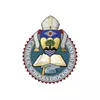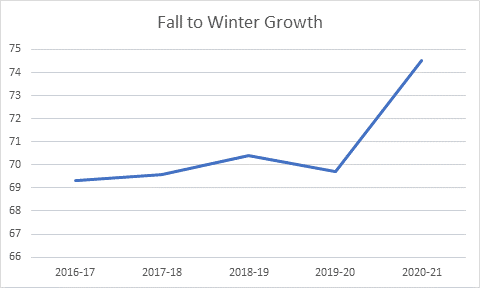
Diocese of Orange Catholic Schools
Orange County, CA
As a ministry of the Diocese of Orange in California, in partnership with parents and parish families, schools in the Diocese of Orange Catholic Schools are committed to making disciples of Christ. Through Catholic faith formation, academic excellence, and service to others, their students transform the world.
Located in Garden Grove, California, the Diocese of Orange Catholic Schools is connected to the Roman Catholic Diocese of Orange and consists of 34 elementary schools and five secondary schools.
Dr. Brad Snyder, the Associate Superintendent of Educational Programs, is tasked with helping schools in the Diocese of Orange to successfully implement educational programs. Prior to this, Dr. Snyder was a principal in a school in the diocese and has held multiple roles in education—starting as a substitute teacher. In his current role, Dr. Snyder works with the Renaissance team to help plan professional development, support schools in the diocese, and foster best practices for Freckle, Star Assessments, and other Renaissance programs.
The challenge
Keeping students engaged in a unique learning environment
With the ongoing COVID-19 pandemic, schools and districts across the nation—including the Diocese of Orange—have made significant changes to instruction to ensure students continue learning and growing. The importance of insightful data and programs that work both in and out of the classroom is more evident now than ever before.
For our diocese, it’s been all about growth—how to use data, interact with data, talk to students and their families about data, etc.,” said Dr. Snyder. “That’s been our focus not just at the teacher level, but at the administrator level as well.”
For our diocese, it’s been all about growth—how to use data, interact with data, talk to students and their families about data, etc.
Dr. Brad Snyder, Associate Superintendent of Educational Programs, Diocese of Orange
When classes in the diocese and across the nation were suspended in March 2020 to help slow the spread of COVID-19, it led the Diocese of Orange to seek creative ways to continue supporting students. In the fall of 2020, the diocese didn’t just double down on in-person or remote instruction, but also incorporated a more in-depth use of Star Assessments and introduced Freckle. In the spring of 2021, the diocese also introduced Renaissance Analytics, confirming the math gains students made despite the challenges.
While fellow Associate Superintendent Dr. Denise Valadez and Dr. Snyder knew their students would likely come into the fall semester a bit behind, they planned to make the most of the valuable one-on-one time with students and lean on Freckle and Star Assessments for insights.
“The data from Star Assessments flows directly into the Freckle Math program and places students right away, so we knew we had a learning path for each one of our students,” added Dr. Snyder.
The results
Substantial math growth with Freckle and data from Star Assessments to inform instruction
With students back in-person last fall (with masks and social distancing in place, of course), educators across the diocese worked hand-in-hand with students and their families to ensure that everyone was comfortable with returning to the classroom for the first half of each week, and then learning at home for the remainder of the week until no longer necessary.
This hybrid learning environment pushed educators in the diocese to try a few new strategies and use technology in new ways which have proven to be so effective, they’ll continue when the world returns to normal. For example, learning time was chunked more than before, using center and rotation models. Times were broken up into 20- or 30-minute increments dedicated to working through adaptive math problems on Freckle, while a second group participated in 20- or 30-minute increments of silent reading time, and a third group conferenced or worked with peers.
With each student getting time to work through adaptive math problems at their own pace, plus the math data feeding into online reporting tools in Freckle, Star Assessments, and Renaissance Analytics, the new strategies have given teachers and administrators deeper insights into how students are progressing and where they might need extra support.
And that insight is leading to data-focused discussions with other educators in the diocese, as well as with Renaissance. April Clark, the diocese’s Renaissance Project Manager, and the Renaissance team have regular meetings with Dr. Valadez and Dr. Snyder. The group meets on a regular basis to discuss product updates, training, and the data from Freckle—trading insights with one another.
“Our teachers will ask other teachers from different schools in the diocese about strategies and best practices. It’s a true exchange of ideas,” said Dr. Snyder.
Our teachers will ask other teachers from different schools in the diocese about strategies and best practices. It’s a true exchange of ideas.
Dr. Brad Snyder, Associate Superintendent of Educational Programs, Diocese of Orange
The importance of math practice with Freckle
To determine how the pandemic has impacted students’ reading and math performance at each grade level, the research team at Renaissance created How Kids Are Performing, an ongoing report series designed to track student performance across the nation using metrics from the millions of students testing with Star Assessments.
The initial edition released this past fall led to a related, follow-up report on Freckle Math usage and its positive impact on preventing the “COVID Slide,” a term used to describe the learning loss from students being in and out of school last spring. The main finding? Students who used Freckle largely avoided the COVID Slide. Those who’d previously struggled in math even exceeded expectations when they returned to school last fall.
That finding is a rare positive from the disruption to schooling caused by COVID-19. However, Dr. Valadez and Dr. Snyder weren’t surprised to hear the results—which included data from the Diocese of Orange Catholic Schools.

Students at the diocese continue to grow faster than ever in their SGPs (Student Growth Percentiles), including the recent fall to winter timeframe. The number of students in the “high growth” and “typical growth” categories has also increased, a great sign that students are continuing to grow despite obstacles.

Students at the Diocese of Orange love Freckle, and that shows not just in their enthusiasm around math, but their improvement in math and other content areas.
As for the future? Dr. Snyder and Dr. Valadez expect Renaissance Analytics—the newest Renaissance implementation for the diocese—to play an important role in providing even more digestible data for administrators. With a constant feed of test results and valuable reading and math practice data all available in one spot, data conversations should be even more targeted and productive.
“It’s a true collaboration between us and Renaissance,” concluded Dr. Snyder. “It’s not just a company telling us what to do. We discuss ideas, pull our teams together, and have a conversation. That speaks volumes to our relationship and shared mission.”

